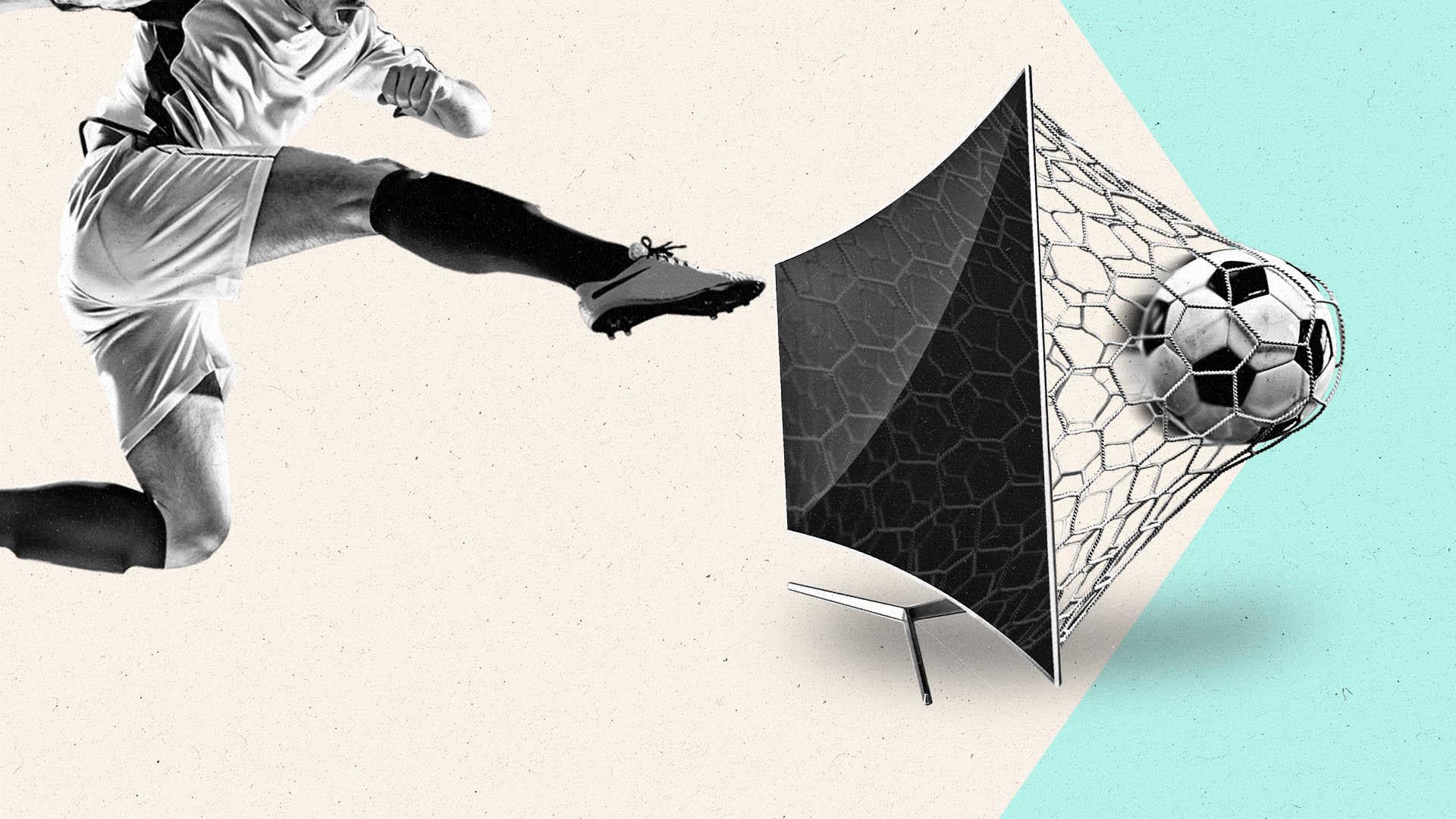Brands like SurveyMonkey and Hyundai are getting a kick out of the World Cup

Illustration by Dave Cole / Getty / The Current
The FIFA World Cup Qatar 2022 is already racking up record viewership, which means advertisers — from major sponsors to national B2B brands — stand to benefit from the world’s most-watched sporting event.
When the software company SurveyMonkey wanted to revamp its brand awareness strategy earlier this year, it tapped the PMG agency to help plan and execute its new campaign. It launched a video spot in the middle of Q3 — featuring the actor Giancarlo Esposito, best known for his role in Breaking Bad. The programmatic strategy targeted live sporting events, hitting the beginning of the NFL season, the NCAA basketball season, as well as Major League Baseball’s World Series.
So far, so good. But this year, the brand took advantage of another huge opportunity: the 2022 FIFA World Cup, which kicked off in Qatar on November 20. Two weeks into the tournament, this World Cup is already breaking new records for viewership. The fever pitch around this ritual sporting event means it draws huge audiences that are not exclusively sports fans.
“During the World Cup, people may watch even though they’ve never really watched soccer before,” Emily Schneider, the programmatic lead at PMG, tells The Current. With that in mind, the SurveyMonkey spot will launch during the quarter finals, running through the semifinals and the final on December 18. From PMG’s perspective, the World Cup opens up the potential to reach audiences beyond the core American sports fan.
It helps that the U.S. men’s national team qualified for the 2022 tournament, after failing to do so in 2018, which is driving engagement for American fans. This year, according to a new survey by Morning Consult, 3 in 5 U.S. soccer fans (58 percent) plan to watch the World Cup, an uptick on the 45 percent who said they watched in 2018. The game is gaining ground in a country where football usually means something else.
The quadrennial soccerfest is an event that breaks through national boundaries and traditional sports demographics. It’s not just passionate soccer fans who are watching. The Fox broadcast of the USA versus England game set a new record by attracting 15.4 million viewers, making it the most-watched men’s soccer match ever on U.S. television. The Argentina versus Mexico match on November 26 notched up almost 9 million viewers in the United States across NBC’s Spanish-language channel, Telemundo, Peacock, and Telemundo’s streaming channels — the most-watched World Cup group stage match in Spanish-language history. Argentina fans (and a few others) were blissful when Lionel Messi, the team captain and one of the world’s greatest players, scored the opening goal against Mexico. This is the beautiful game as pop culture.
On that point, sports stars such as Messi and Portuguese superstar Cristiano Ronaldo have millions of followers on social media, which further expands potential audiences for brands that want a piece of the World Cup action. The fact that this year’s U.S. team is comprised of Gen Z players, with an average age of 24.1 years old — “astonishingly low by soccer standards,” notes The Wall Street Journal — further bolsters the fact that World Cup audiences are demographically expansive.
There’s never been a tournament quite like the Qatar 2022 World Cup, which is being held in the middle of winter because of Qatar’s notoriously hot and humid climate, and which has been dogged by questions and controversies over human rights abuses. “Obviously 2022 is unique because of the issues surrounding human rights in Qatar, the rules around what is allowed in that market, and the shift in timing to November/December,” says Marisa Mulvihill, partner and head of brand and activation at Prophet, the global consultancy. “This requires some sensitivity, but audiences haven’t turned off the game so advertisers shouldn’t either,” she tells The Current.
The World Cup has a momentum of its own — as well as a potential global audience in the billions — and perennial sponsors such as Adidas, Coca-Cola, and Hyundai are invested in the feel-good factor of the event.
“It seems like the world of sport, and especially the FIFA World Cup, is [an opportunity for people] to stop and come together, where we maybe for a moment suspend those things that are kind of not great and say, ‘What are the things that we can unify on?’” Angela Zepeda, the CMO of Hyundai Motor America, tells The Current.
For Hyundai, the focus for this World Cup is sustainability — a global message at a time when the world is reckoning with the impacts of climate change. The company launched a campaign under the banner “Goal of the Century,” which features former Liverpool F.C. star Steven Gerrard and the South Korean boy band BTS as brand ambassadors. “It’s all about our goals as a company committed to sustainability and our mission to get to carbon neutrality by 2045,” she says.
“We’re trying to just make it not really about Hyundai and about the cars we sell, but about the role we play in the world, about trying to make the world a better place,” she adds.